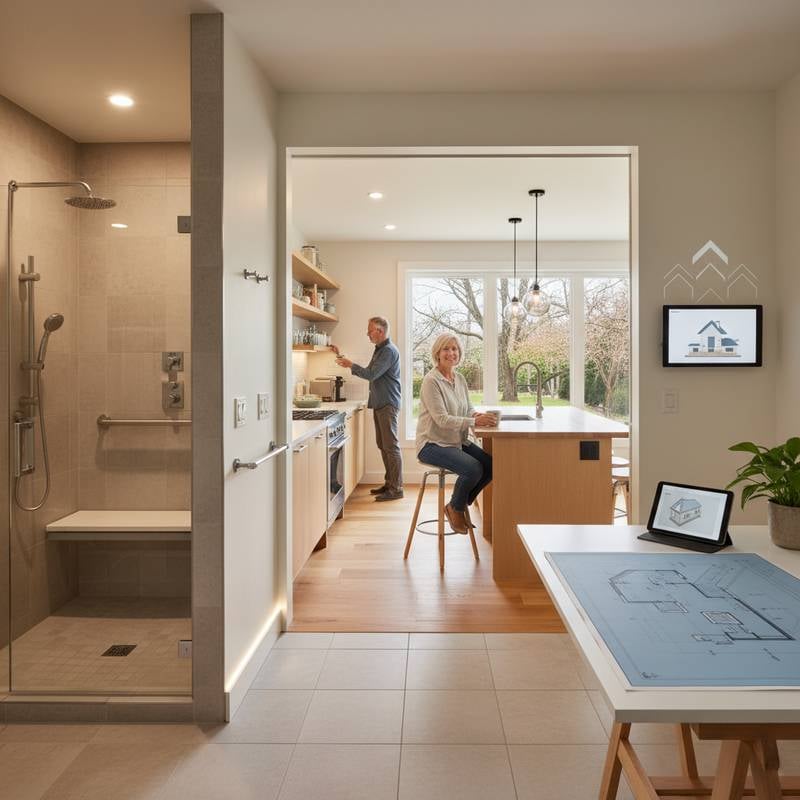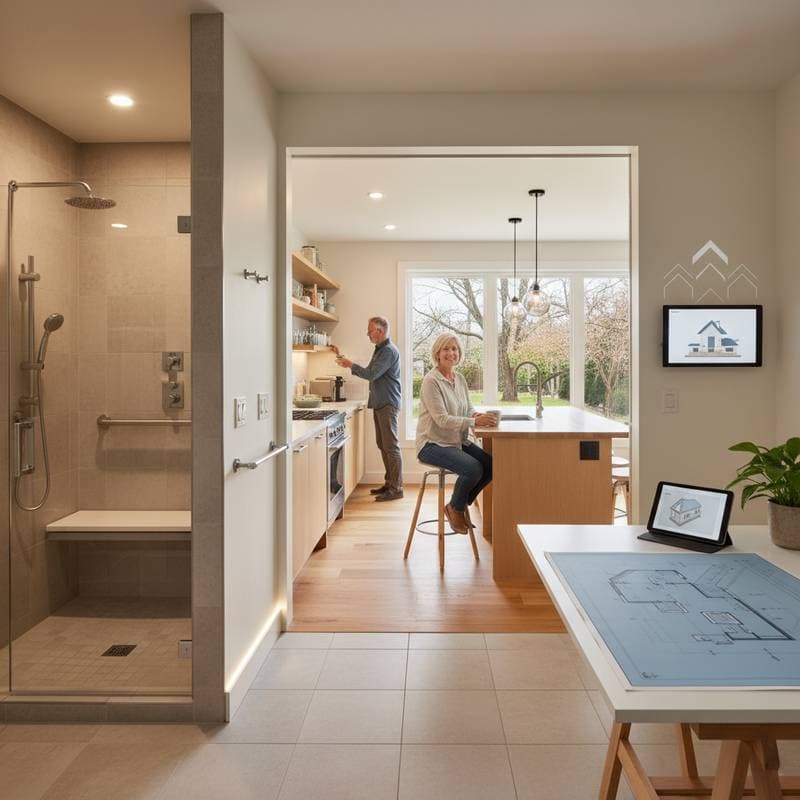5. Lighting and Electrical Adjustments
Proper lighting enhances visibility and reduces fall risks. Electrical modifications improve convenience by minimizing awkward movements.
Suggested upgrades:
- Install motion-sensor lights in hallways, bathrooms, and entryways to activate automatically upon approach.
- Position rocker-style switches at 36 to 48 inches from the floor for easier access without stretching.
- Add additional outlets near seating areas and beds to accommodate chargers for medical devices or mobility aids.
- Incorporate adjustable task lighting over kitchen counters and reading nooks to provide focused illumination.
Typical cost range: Basic adjustments, such as adding switches or sensors, range from $500 to $1,500. Full rewiring or extensive fixture installations may reach $3,000 to $5,000, depending on the home's size and existing wiring.
Why it matters: Enhanced lighting lowers accident risks by illuminating paths clearly. Accessible switches and outlets simplify daily routines, promoting greater independence.
6. Bedroom and Living Space Comfort
These areas benefit from subtle layout changes that prioritize ease of movement over major renovations.
Common updates:
- Widen pathways to at least 36 inches between furniture to allow comfortable navigation with walkers or wheelchairs.
- Install lower closet rods at 48 inches and pull-out shelving at reachable heights to avoid overreaching.
- Select adjustable-height beds with side rails for simpler entry and exit.
- Reinforce bathroom-adjacent walls during initial work to support future grab bar additions without disruption.
Typical cost range: Rearrangements and minor carpentry start at $300 to $1,000. Adding adjustable features or reinforcements may increase costs to $2,000 to $4,000.
Design tip: Opt for lightweight, non-slip furniture with rounded edges. Use layered lighting with dimmable options to create a soothing environment that supports restful activities.
7. Whole-Home Planning and Structural Work
For broader adaptations, structural modifications ensure long-term usability across the entire residence.
Potential upgrades:
- Add a home elevator or vertical platform lift for multi-story homes, providing seamless vertical access.
- Convert closed layouts into open floor plans by removing non-load-bearing walls to improve flow.
- Enlarge main-floor bathrooms to include roll-in showers and spacious vanities.
- Strengthen subfloors and walls throughout to accommodate potential ramps or heavy-duty aids later.
Typical cost range: Structural projects begin at $10,000 for a platform lift and escalate to $50,000 or more for elevators or full conversions, influenced by home size and material quality.
Why it matters: Such investments prolong comfortable living in familiar surroundings. Thoughtful designs also enhance marketability, appealing to future buyers seeking versatile spaces.
Factors That Influence Total Cost
Multiple elements determine the overall expense of an aging-in-place project.
- Home age and layout: Structures built before 1980 frequently require foundational electrical or plumbing overhauls, adding $2,000 to $10,000 before accessibility features.
- Material choices: Select slip-resistant flooring like cork or vinyl composites, which cost 20 to 50 percent more than standard options but demand less upkeep over time.
- Scope of work: Targeting one area, such as a bathroom, limits expenses to $5,000 to $15,000, whereas whole-home efforts exceed $30,000.
- Professional labor: Engage contractors certified in universal design principles; their expertise ensures adherence to building codes and avoids costly rework.
Homeowners control expenses by sequencing upgrades, focusing first on high-impact zones like entrances and bathrooms before addressing less urgent areas.
Cost-Saving and Planning Strategies
Strategic approaches help balance budget with effectiveness.
- Conduct a professional assessment: Hire a specialist from the National Association of Home Builders to inspect your space and prioritize modifications within your financial limits.
- Integrate features during existing projects: If refreshing a kitchen, incorporate lever handles and lowered counters simultaneously to leverage shared labor costs.
- Emphasize flexible designs: Install modular cabinetry with adjustable components and pre-reinforced structures, enabling adaptations as needs evolve without full teardowns.
Explore financial assistance through programs like property tax exemptions for accessibility improvements or low-interest loans from the Department of Housing and Urban Development.
Steps to Implement Your Remodel
Aging-in-place updates combine functionality with aesthetic harmony to preserve your home's unique appeal.
Collaborate with a licensed professional experienced in accessibility standards to integrate changes seamlessly. These enhancements safeguard your well-being, elevate daily living, and secure your property's value for the future.











